Technology
I Tracked My Glucose Levels With My Favorite Fitness Tracker. These 3 Takeaways Surprised Me
As a wellness editor and writer, I’m constantly experimenting with the latest health tech, so I was naturally intrigued when I learned that Oura Ring partnered with Dexcom’s Stelo, a continuous glucose monitor designed for people without diabetes. The goal of this collaboration is to help everyday people like me understand how food and general […]
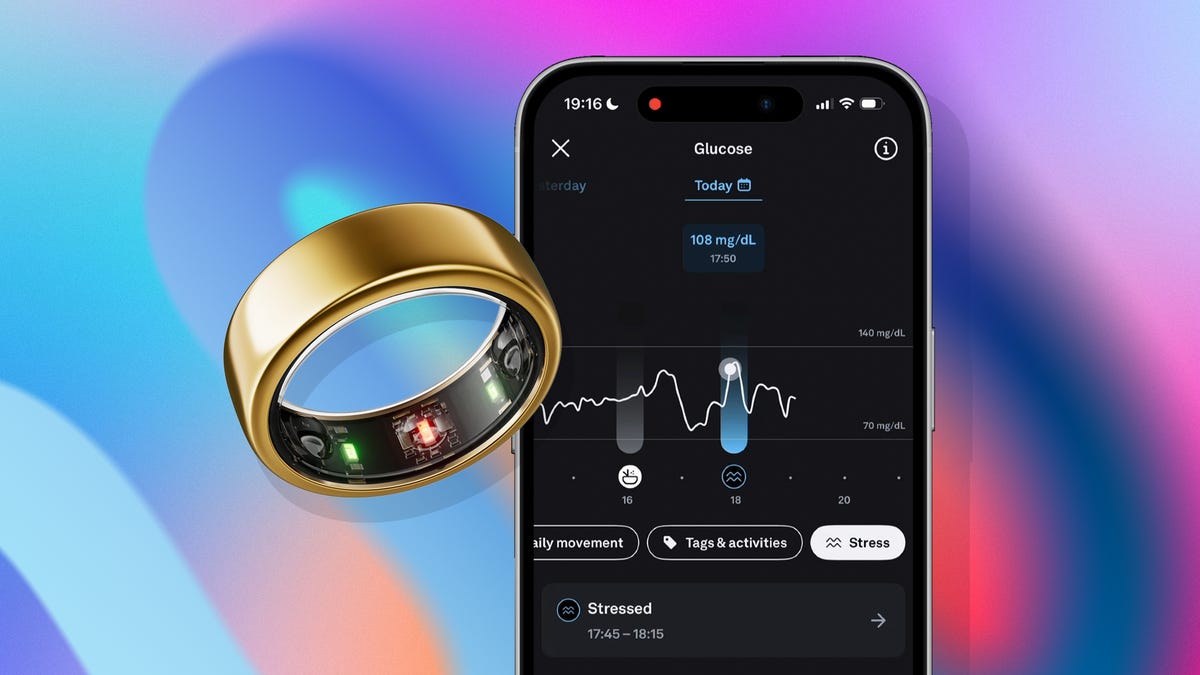
As a wellness editor and writer, I’m constantly experimenting with the latest health tech, so I was naturally intrigued when I learned that Oura Ring partnered with Dexcom’s Stelo, a continuous glucose monitor designed for people without diabetes. The goal of this collaboration is to help everyday people like me understand how food and general eating habits impact blood sugar and overall health.
“By combining Stelo data with Oura’s existing insights, we’re empowering members to better understand the cause-and-effect relationships between eating patterns, energy, mood and recovery — and ultimately make sustainable, science-backed lifestyle changes,” Maz Brumand, vice president of product for Oura, told CNET.
I’ve used my Oura Ring daily for the past three years to track my sleep, recovery and stress. But it was the first time I heard that a fitness tracker can monitor blood sugar levels. I tested the Stelo CGM with my Oura Ring for two weeks, and I can say that it changed the way I eat and move, and I think this type of biofeedback is helpful for everyone, even if you do not have diabetes.
What is continuous glucose monitoring, and why is it important?
Your blood sugar, or blood glucose, refers to the measurement of sugar in your blood. According to the Cleveland Clinic, glucose is the main source of energy for your body — it’s what powers your muscles, brain and even your cells. When you eat certain foods (particularly carbohydrates), your glucose rises, and your body responds by releasing insulin to shuttle that sugar into cells for energy or storage. On the flip side, if you experience frequent spikes or crashes (even if you don’t have diabetes ), it can impact your energy, sleep, mood and even long-term metabolic health. When your body doesn’t need glucose immediately, it stores it as glycogen in your muscles and liver.
For people with diabetes, monitoring glucose levels is crucial. But is it important to do the same for the rest of us without a diagnosis? To an extent, I think so. Monitoring your blood sugar throughout the day and seeing how your body reacts to different foods can reveal a lot about your cravings, sleep and metabolic health. “Glucose is a real-time window into metabolic health, which underpins how we feel day to day — our energy, focus, mood and sleep — and how resilient we are over time,” Brumand says.
With the rise of wearable glucose sensors like Stelo, those without diabetes can now get insights into how their eating habits impact their bodies (without finger pricks or a prescription).
What is a ‘normal’ glucose range, and are spikes bad?
Before using a CGM, I thought blood sugar was either stable or erratic, with no room for in-between spikes. Once I began tracking my glucose daily, I quickly learned that spikes are completely normal, especially after meals and snacks.
Most people will see glucose levels rise and drop throughout the day. According to the American Diabetes Association, a general target range for adults without pre-diabetes or diabetes is between 70 and 140mg/dL (note that Oura also follows this range, and it’s what users can expect to see in their graphs). It’s also worth highlighting that 70 to 100mg/dL is considered normal for fasting (particularly in the morning before having food), and under 140 mg/dL is common, especially after meals.
“Clinical studies show that even in healthy individuals, a moderate glucose spike (rise above 140mg/dL) can occur on a daily basis. In fact, research suggests that healthy adults will live above 140mg/dL for about 30 minutes, up to 2 hours a day, which is usually 1 to 3 short-lived glucose spikes”, says Renee Fitton, registered dietitian and director of education at L-Nutra, a nutrition technology company.
Fitton further explained that the number and frequency of glucose spikes depend on various factors, primarily what and when you’re eating. These spiked can also be affected by other factors like stress level, exercise, dehydration and even whether you have a sunburn.
Many glucose monitors use a custom range that adapts to your body’s baseline and patterns over time. When looking at your graph, it’s important to keep in mind that context and trends matter more than one-off spikes. For example, seeing a spike after dessert isn’t a sign that something is wrong. It’s a sign that your body is doing its job. What matters most is how quickly your glucose returns to baseline and how often your levels stay elevated over time.
“I would not see signs for concern for occasional (one to three times per day) moderate spikes (less than 160mg/dL) that resolve within about 30 mins. When reaching more frequent, especially if they are higher spikes (for example, above 180mg/dL), that take a long time to resolve (over 60 minutes), then there may be concerns about metabolic health,” Fitton explained. “A completely flat glucose curve is not something that we aim for; you want some gentle ups and downs as a sign of healthy metabolic flexibility.”
How I set up the Stelo monitor with my Oura Ring
You can order the Stelo sensor through ouraring.com ($99 for two sensors). I received a small box with the sensors and easy instructions. Applying it to the back of my upper arm took less than 2 minutes and was surprisingly painless. And yes, there is a small needle involved. I’m terrified of needles, so I spent some time mentally preparing to prick myself, but to my disbelief, I didn’t feel it at all. The sound the ejector makes is pretty loud, though. I sometimes think the sound acted as a diversion to my brain, and that’s why I didn’t feel anything. But, nonetheless, it was a pretty pain-free experience. Once in place, I paired it to the Stelo app, and it automatically reflected within the Oura app. Each sensor tracks your glucose level 24/7 for up to 15 days.
Left Image: CGM in the self-injector. Right image: CGM on the back of my right arm.
From the Oura app, I could see how my glucose levels fluctuated throughout the day. You can easily access it at the top of the app, where you also see other data metrics like sleep, heart rate, activity and readiness score (a personalized score, ranging from 0 to 100, that provides a snapshot of how well your body has recovered from the previous day’s activities and sleep).
How even my ‘healthy’ food choices raised my blood sugar (and that’s OK)
One of the most eye-opening parts of my testing was seeing how some of my favorite healthy staples played out on the glucose graph. A great example of this was my favorite pressed juice.
I had a pressed juice in the morning that contained pineapple, beets, carrots, ginger, cucumber and lemon. It’s nutrient-dense, but it also spiked my glucose above what’s considered my healthy range for about 6 minutes (a small window and still considered optimal for my age and overall metabolic health). This was enough to make me rethink how and when I consume fruit-heavy beverages.
The next day, I experimented with having a fruit smoothie instead of juice. I made a homemade smoothie with berries, banana, plant-based protein powder, peanut butter, soy milk and oats. This smoothie kept my glucose completely in range (zero minutes above my personal threshold). The added protein and fiber from the fruit, oatmeal, peanut butter and protein powder helped slow the absorption of natural sugars into my bloodstream.
What I learned: Even natural fruit juices can cause glucose spikes, especially when consumed on an empty stomach and without any protein or fiber. Smoothies that include protein, fat and fiber can help keep spikes at bay and help stabilize your energy levels.
Balance your meals with protein, fats and fiber
Later that week, I had sushi rolls with a side of edamame for dinner. To my surprise, my glucose levels stayed within range the whole time. Oura Advisor (Oura’s AI coach) even pointed out that this food combination offered protein and fiber, which likely contributed to the steady glucose levels. This moment was really encouraging for me. It made me realize that I don’t need to drastically change what I eat. By just being more intentional about how I pair my foods, I can drastically improve the impact they have on my blood glucose. Pairing your foods with healthy fats like avocados, nuts, seeds and olive oil can also slow digestion and therefore the absorption of sugars.
Fitton explains that this is primarily due to what happens in our digestive tract, even before the nutrients get to our bloodstream. Protein, fiber and healthy fats work in their own way to slow the absorption of simple carbohydrates into the bloodstream, making a slower, more gradual release of sugars into the blood. These factors turn what could be a glucose spike into a steady rise that your body can clear gradually.
“The biggest area of concern when managing our blood sugar levels is limiting refined carbohydrates. When you do choose a refined-carb item (a plain cracker, white flour tortilla, cookies, etc.), try to pair it instead of eating it solo: add cheese, nut butter or a handful of edamame to blunt the glucose rise, and choose a higher-fiber version of your carbohydrate source when possible (for example, whole-grain crackers) so the carbs come packaged with their own speed limit,” Fitton says.
Cake and a walk equal steady blood sugar?
One of the more surprising things I learned was that blood sugar stability isn’t just about what you eat. It’s also about what you do after you eat. One afternoon, I had a slice of cake for a snack. No fiber or protein added, just the cake (I had lunch a few hours before).
Instead of my blood sugar spiking, my glucose levels remained steadily in range. The caveat? I took a brisk walk after having my dessert. It wasn’t anything strenuous, just a short 15-minute walk around my neighborhood. But it was enough to help my body process and use the glucose more efficiently.
“The body knows that exercise demands more energy, and so it helps open up our cells to soak up sugar (energy) and remove it from our blood. A 10-minute walk burns about 30 to 40 calories, and your body will get that energy from circulating glucose or stored glycogen,” Fitton explained.
After eating cake and going for a walk, my blood sugar saw a slight spike, but stayed within range.
Taking a walk after meals has long been recommended by experts for metabolic health, but seeing the effect in real time made it click for me. I do think that having the cake after having a balanced meal with protein and fiber also contributed to my steady levels of blood sugar.
Sometimes, it’s not about completely eliminating our favorite treats or carbs, but more so about timing, food pairing and movement.
3 ways I learned to flatten my glucose curve without sacrificing my favorite meals
Before using the glucose sensor with Oura, I assumed blood sugar spikes were mostly about foods and how they impact your body. I also thought the only way to manage them was to cut carbs or drastically change my diet. But over these two weeks, I experienced firsthand how and when I eat (and move) matter just as much as what I eat. I learned that these three strategies helped keep my glucose levels in check.
Pair carbs and sweets with protein, fiber and healthy fats
When I had a berry smoothie with protein powder and soy milk, my glucose levels stayed steady. In contrast, when I had a fruit smoothie earlier that week, my blood sugar levels spiked and crashed more quickly.
Takeaway: Carbs on their own, especially refined and processed carbs, can spike blood sugar quickly, but adding protein or fat slows digestion and leads to a more gentle spike.
Food pairing examples: Apples and peanut butter, toast with avocado, rice with beans or another protein.
Walk it out (especially after sweets)
When I had cake as a snack, I was sure my graph would spike dramatically, but it didn’t because of my walk (and eating a balanced meal before).
A simple walk, even just 10 to 15 minutes, can help offset blood sugar spikes. This small but simple habit helps me now enjoy treats without the crash later.
Timing your food matters
I also noticed that when I ate higher-carb foods earlier in the day, my body processed them better than when I had them later at night. Breakfast smoothies and bowls kept my levels stable, while the same smoothie after 9 p.m. caused more spikes.
“When it comes to blood sugar management, we see that in the morning our body usually has a spike in cortisol (a stress hormone) that can actually help our body take up sugar very quickly and quickly manage blood sugar. Eating in the morning will also calm the cortisol response, reducing the stress on your body. If you wait too long to eat, excess cortisol can create inflammation and also produce larger glucose spikes when you do eat,” explained Fitton.
Fitton further explained that, conversely, in the evening, the sugar management systems in our bodies start powering down and are not as good at helping blood sugar get into the cells. So it is important to try not to eat too late; otherwise, you’ll probably see blood sugar go up and stay up for longer.
That doesn’t mean you can’t eat carbs or treats at night, but eating them earlier in the day when insulin sensitivity tends to be higher can make a real difference.
Technology
NFHS tightens rules on technology use in high school softball
Mark SheltonDodge City Globe As wearable technology and live streaming become increasingly common across all levels of sports, the National Federation of State High School… Previous Post State basketball sites, format set for ‘26, ‘27 Next Post MLB plans to use robot umpire challenge system in All-Star Game next week Link 0

Technology
Tech hitting the pitch again at MLS All-Star Week
May you have a glorious summertime Friday. And now we pivot to the return of the Future of the Game Showcase for the MLS, which will feature many sports tech startups (and a couple of SBJ 10 Most Innovative Sports Tech Companies). — Ethan Joyce In today’s edition of Power Up: Future of the Game […]

May you have a glorious summertime Friday.
And now we pivot to the return of the Future of the Game Showcase for the MLS, which will feature many sports tech startups (and a couple of SBJ 10 Most Innovative Sports Tech Companies). — Ethan Joyce
In today’s edition of Power Up:
- Future of the Game Showcase returns at MLS All-Star Game
- LiveLike secures $3.5M growth credit facility from Bigfoot Capital
- WMT Digital revitalizes app for WNBA’s Storm
MLS will again hold its Future of the Game Showcase during All-Star Week this summer, hosting technology demos on July 22 and 23 at Q2 Stadium. The showcase debuted last year and is a tentpole of the league’s ongoing tech-forward strategy.
Of the eight companies scheduled to participate, six are startups who took part in either the first or second cohort of the MLS Innovation Lab, the league’s incubation program to pilot emerging tech products.
The MLS Next All-Star contest will feature three pieces of technology, with data on the pitch transmitted in real-time to the showcase. No single player will wear more than one, but groups of players will have:
- Oliver Sports soccer-specific GPS trackers.
- Soccerment smart shin guards providing performance data.
- Lubu Technologies smart insoles to track ground forces and movement.
Also participating will be:
- Edge Sound Research: Live immersive sound product.
- Wicket: Facial recognition technology.
- Camb.ai: AI translation of the match in multiple languages.
- Sportec Solutions: MLS data partner to demo its AI Live Ticker and Data Story Finder with storytelling and visualizations for fan engagement.
- OneCourt: Tactile tablet helping blind and low vision fans track the game through vibrations.
Fan engagement technology platform LiveLike has secured a $3.5M credit facility from Bigfoot Capital as it eyes its next phase of growth. LiveLike CEO Miheer Walavalkar called the capital infusion an “endorsement of the long-term vision” of the business in a note to SBJ, adding it will be channeled towards supporting international clients, growing the company’s staff in key markets and investing in innovation for partners.
“We’re especially focused on scaling our AI-powered engagement tools that help clients deepen fan interaction in more dynamic and intelligent ways,” Walavalkar said. “These tools are already delivering significant efficiencies across live sports and entertainment platforms, and we believe they’ll be foundational to the next era of fan-first experiences.”
LiveLike’s sports-focused services include rewards programs and interactive livestream add-ons, among other offerings. The company now has 40 clients, with nearly half of those international.

The Storm have named WMT Digital as the developer of its recently overhauled app, giving the technology firm its first WNBA client and further expanding its pro sports footprint.
The new Storm app includes streamlined ticketing deployment thanks to an integration with Ticketmaster, as well as integrations with the WNBA data feeds for up-to-date access to news, schedules and rosters. The overall enhancements went live for fans ahead of the WNBA regular season in May and was built in a three-month window after reaching an agreement on the project in February.
Storm CMO Will Gulley picked WMT as their new app developer because the company could quickly fix essential user experiences like ticketing management. The startup was also willing to work out unique solutions, like folding in augmented reality experiences and a pregame light show that incorporates attendees’ phones via fan experience company Cue Audio. “We needed somebody that could grow with us,” Gulley told SBJ.
WMT’s initial foundation started in the college space, but the company has built out more of a pro sports footprint. The Storm join WMT clients Player 15 Group, Rock Entertainment Group and the Mets, among others. WMT works with 40% of schools in the Power Four conferences. WMT founder & CEO Andres Focil was also named to SBJ’s most recent Forty Under 40 class.
Technology
Amazfit’s great Active 2 fitness tracker is just $79.99 for Prime Day
If you’re looking for a budget-friendly smartwatch that doesn’t skimp on features, the Amazfit Active 2 is one of the best Prime Day deals you’ll find. Normally $99.99, it was already a great deal in and of itself, but right now it’s practically a steal starting at $79.99 ($20 off) directly from Amazfit and Amazon, […]

If you’re looking for a budget-friendly smartwatch that doesn’t skimp on features, the Amazfit Active 2 is one of the best Prime Day deals you’ll find. Normally $99.99, it was already a great deal in and of itself, but right now it’s practically a steal starting at $79.99 ($20 off) directly from Amazfit and Amazon, which is a new low price.
Unlike most budget smartwatches, the Active 2 actually looks and feels premium with its stainless steel case and tempered glass. For an additional $50, you can upgrade to a version with sapphire crystal and an extra leather strap. During testing, my colleague Victoria Song says she received compliments, something she rarely gets for a budget smartwatch.
The platform-agnostic watch also offers a number of health and fitness tracking features that are rare to find at this price point, which is why it’s one of our favorite wearables. It covers all the basics and then some, ranging from continuous heart rate monitoring and blood oxygen rate to daily readiness scores and detailed sleep tracking. It also supports over 160 activity modes and boasts offline maps with turn-by-turn directions, while providing access to all five major GNSS satellite systems for more accurate location tracking (though not dual-frequency GPS).
What also sets the Active 2 apart is its suite of AI tools. The on-device Zepp Flow assistant lets you control settings and ask simple questions, while the optional Zepp Aura AI chatbot ($77 per year) provides personalized insights into your sleep and readiness metrics. There’s also Zepp Coach, which can create training plans tailored to your goals.
You won’t find some advanced health features like EKGs, but still, the Amazfit Active 2 offers far more than you’d expect at this price. For anyone looking for a stylish, feature-packed smartwatch without a premium price, this Prime Day deal is hard to beat.
Technology
Signing Day Sport Stock (SGN) Surges 145% on Bitcoin Mining Deal
Signing Day Sports (SGN) stock surged on Friday after the athlete recruiting technology company announced a planned merger with Bitcoin (BTC) mining technology and digital infrastructure company BlockchAIn, One Blockchain LLC. Don’t Miss TipRanks’ Half-Year Sale The combination of Signing Day Sports and One Blockchain requires approval from SGN shareholders. On top of that, it […]

Signing Day Sports (SGN) stock surged on Friday after the athlete recruiting technology company announced a planned merger with Bitcoin (BTC) mining technology and digital infrastructure company BlockchAIn, One Blockchain LLC.
Don’t Miss TipRanks’ Half-Year Sale
The combination of Signing Day Sports and One Blockchain requires approval from SGN shareholders. On top of that, it needs permission from the NYSE American to create a ticker for One Blockchain. A combination would be beneficial for both companies, bringing One Blockchain to the public market with its 2024 revenue of $26.8 million and net income of $5.7 million.
Signing Day Sports stock was up 144.72% in pre-market trading on Friday, following a 9.82% rally yesterday. However, the shares have fallen 53.23% year to date and 89.59% over the past 12 months. Today’s rally came alongside heavy trading, with some 68 million shares traded, compared to a three-month daily average of roughly 8.25 million units.

Is Signing Day Sports Stock a Buy, Sell, or Hold?
Wall Street’s coverage of Signing Day Sports is limited, but TipRanks’ AI analyst Spark has the stock covered. Spark rates SGN a Neutral (52) with a $1 price target, suggesting a possible 18.7% downside for the shares. It cites “significant financial challenges, including negative profitability and high leverage” as reasons for this stance.

See what else Spark has to say about SGN stock
Disclaimer & DisclosureReport an Issue
Technology
Inside the Fitness Industry’s AI Overhaul: From Data Chaos to Personalization
At the ATN Innovation Summit, fitness leaders showed how AI is moving from buzzword to bottom line As AI continues to dominate headlines in 2025, two panels at the ATN Innovation Summit 2025 made one thing clear: transformation in fitness takes more than tech hype. Leaders from across the industry pulled back the curtain on […]

At the ATN Innovation Summit, fitness leaders showed how AI is moving from buzzword to bottom line
As AI continues to dominate headlines in 2025, two panels at the ATN Innovation Summit 2025 made one thing clear: transformation in fitness takes more than tech hype.
Leaders from across the industry pulled back the curtain on the operational realities behind innovation, from reinventing outdated data systems to rethinking loyalty strategies and scaling personalization without losing the human touch.
Personalization Without Losing the Human Touch
In the session titled “More Than a Buzzword: How AI Is Transforming Fitness Right Now,” moderated by Eric Malzone, host of The Future of Fitness podcast and ATN’s “Master Knowledge” series, panelists didn’t waste time on hypotheticals. With the AI fitness and wellness market projected to hit $35 billion by 2031, the focus was squarely on execution.
Dana Milkie, general manager at EGYM, said the goal isn’t to replace trainers but to scale their impact.
“We sit on over 9 million workouts and more than 500 million assessments,” he said. “By layering AI on top, we’re creating hyper-personalized programs that adjust to both the member’s data and the inventory of the gym itself.”
That personalization is already visible in EGYM’s new Genius AI system, which tailors workout plans based on available equipment and user goals. The platform doesn’t just generate routines; it provides weight recommendations and rep ranges based on ongoing assessments.
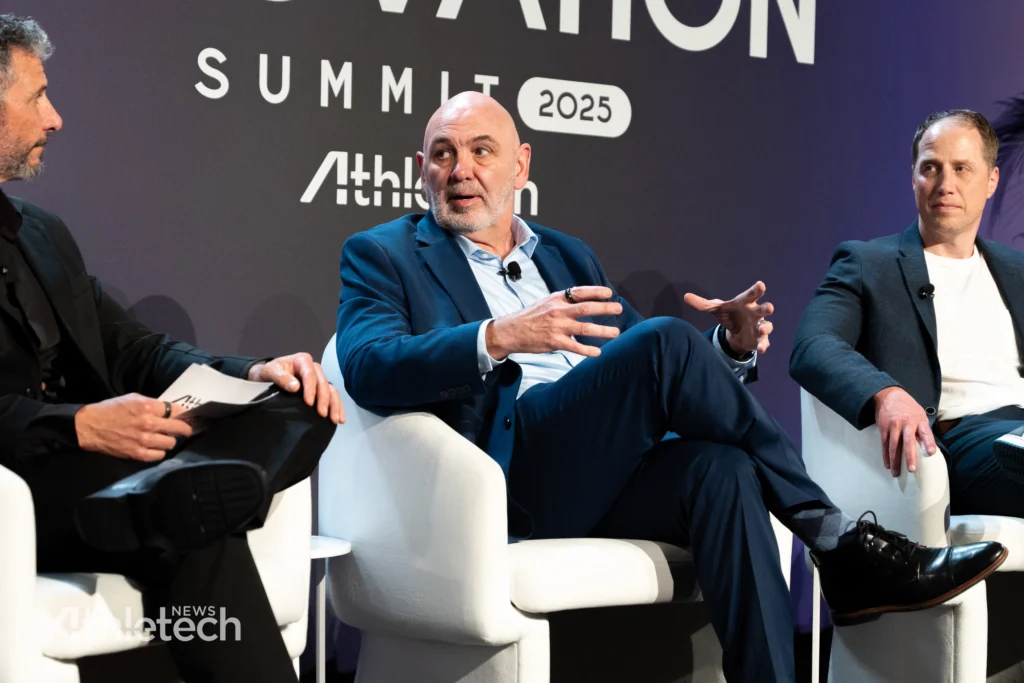
Natalie Jones, senior director of business operations at Future, emphasized that even with AI, the human connection remains irreplaceable.
“It’s really hard for an AI persona to say to you, ‘I get what it means to lose 20 pounds, to try and get consistent while you have two kids,’” she said, adding that the human connection is invaluable and something people will continue to pay for.
Still, AI is becoming more sophisticated in complementing that relationship. Future now uses AI to analyze coaching interactions, flag when a message should be sent and suggest personalized check-ins – essentially becoming a smart assistant for human trainers.
Joe DeMarco, co-founder and CEO of SalesRevv, said automation is transforming fitness sales as well. His company builds AI-powered sales agents that engage prospects via text and email using brand-specific language, helping operators reduce labor costs while improving consistency.
“Our AI is not just communication – it’s actually doing the work,” DeMarco said. “It’s reaching out, trying to get them booked to that first appointment, showing them the schedule.”
All three panelists acknowledged the growing pains of integrating AI into existing operations but agreed it’s no longer optional, a point emphasized by Milkie.
“We’re slow to adopt tech in this industry,” he said. “AI isn’t a someday tool. It’s here now, and we have to lean in.”
From Fragmentation to Fluidity
While the first panel focused on AI, the “Fit Tech Playbook: Insights From Master Operators” session, moderated by Alta Tech Group managing partner Al Noshirvani, zoomed out to examine how fitness companies are rebuilding legacy systems, prioritizing data strategy and managing tech investments amid rising consumer expectations.
“Everybody wants to do something with AI,” said Ryan Hawk, chief technology officer of Vasa Fitness. “But AI is only as good as the data you feed it. If your systems don’t talk to each other, you’re stuck.”
Hawk said his team’s first step was building a centralized, AI-ready data platform that pulls in information from fragmented systems.
“We use that to run unsupervised learning models that can identify member segments that might be meaningful based upon all of these features that we have in our data store,” he said. From there, the company can test churn-prevention tactics, recommend classes or trigger reward incentives via its mobile app.
Stephanie Tucker, chief customer officer of Hapana, echoed that sentiment.
“We’ve definitely come a long way as an industry from the sign-in sheets at check-in,” she pointed out, adding that as they develop new features, Hapana is balancing broad industry themes like personalization with the specific needs of smaller customer segments.
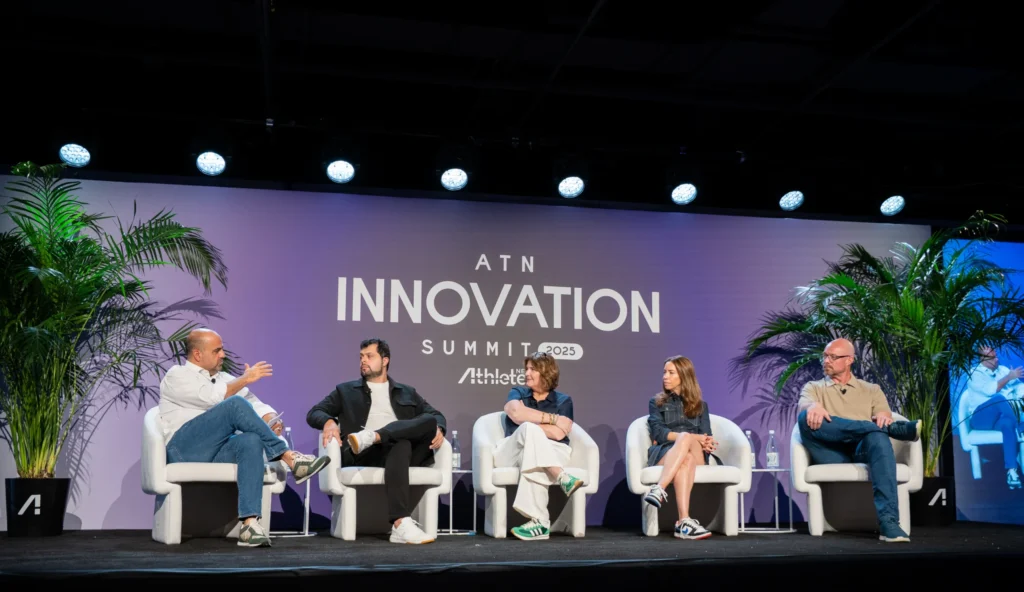
Kari Saitowitz, chief marketing and creative officer at New York Sports Clubs, said personalization has become table stakes: “We used to send the same communications to everybody… and now we send different communications depending on how people interact with the business.”
She added that AI isn’t just influencing email and SMS. NYSC is also using an AI ad platform to automate thousands of creative variations for digital campaigns, tailored to different prospect behaviors.
For Smart Fit chief technology officer Alex Gregianin, scale demands efficiency. With over 1,500 clubs across Latin America, his team uses machine learning to optimize when members should visit based on gym traffic and personal preferences.
“We can pretty much recommend the best workout for that time, the best exercise for him or her,” he said.
Smart Fit has also built its own mobile app ecosystem, including a social networking feature that helps users connect.
“Everyone knows that if you have people engaged, they stay longer,” Gregianin said. “So we added group features where members can chat, plan visits and track progress together.”
Buy or Build? It Depends on the Mission
As club operators experiment with everything from gamification to rewards programs, the question of whether to buy or build remains top of mind.
“If it’s a commodity – something readily available on the market and not core to our business – we’ll typically buy it,” Gregianin said. “But if it directly shapes the member’s digital experience or is part of our daily operations, we prefer to build it ourselves. That way, we can customize it and tailor the experience to deliver the best possible outcome for our members.”
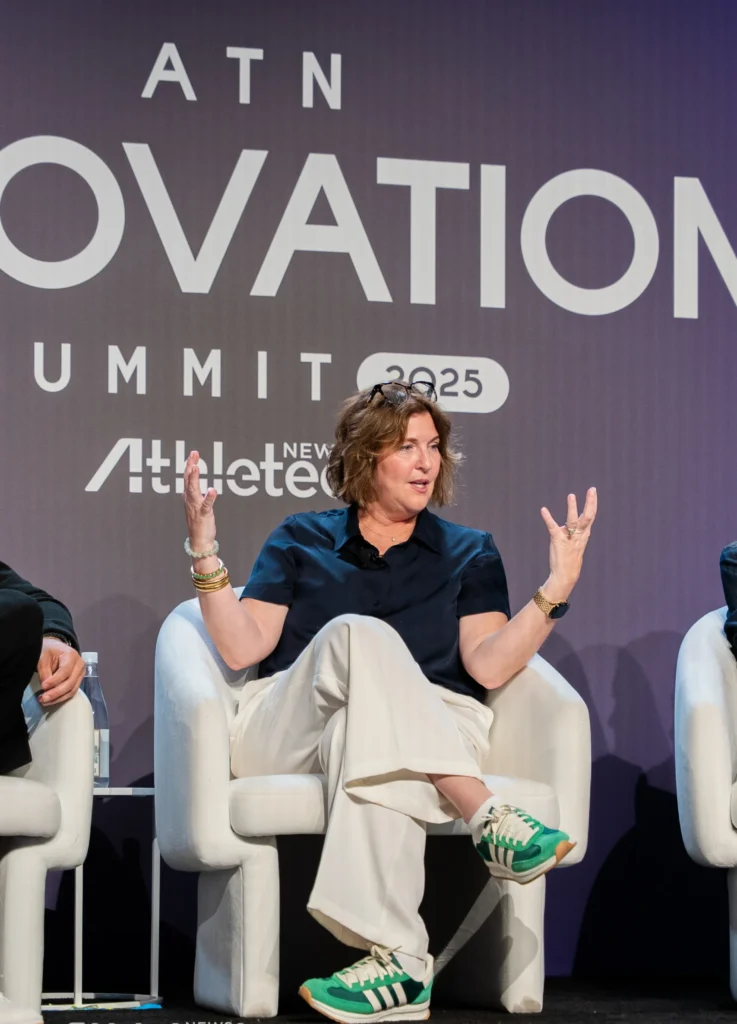
Hawk agreed but added that internal capabilities can shift the approach.
“Do we have the internal expertise? Is it something proprietary to us? Can we get it to market faster if we build it? Speed matters, and internal feedback loops let us learn and iterate more quickly than relying on external vendors,” he said.
Saitowitz, meanwhile, emphasized strategic partnerships, such as NYSC’s on-demand content from Les Mills and tapping Garmin for challenges and perks.
“We can’t build everything ourselves,” she said. “Partnerships keep us relevant without diluting the brand.”
The Future of Loyalty Is Data-Driven
When asked how they’re thinking about loyalty, panelists returned to one theme: data unlocks action, tracking check-ins and purchases to engagement with in-app challenges to trigger rewards or re-engagement offers that match member behavior.
Smart Fit’s loyalty model is similarly gamified. Members earn perks the longer they stay, with tangible benefits, Gregianin said. The company is also investing in features that encourage social interaction, aiming to turn solo workouts into communal experiences.
For Tucker, loyalty starts with lightening the load on staff.
“As we use technology to work smarter, not harder, it allows us to stay focused on what matters most – delivering high-touch, personalized experiences. This is a high-touch business, and we need to make sure our time and energy go where they have the most impact,” she said.
Across both panels, one message was clear: AI and tech aren’t just buzzwords, they’re business levers. Whether it’s segmenting users, personalizing workouts, improving retention or reducing churn, the operators leading the charge are those investing in data infrastructure, forging strategic partnerships and empowering teams to adapt.
This article is based on a live discussion held during the ATN Innovation Summit 2025, a two-day event dedicated to the future of fitness and wellness. See here for More Innovation Summit coverage.
Technology
Purpose-Built eSports Mouses : Razer DeathAdder V4 Pro
The Razer DeathAdder V4 Pro is an upcoming peripheral engineered by the gaming-focused tech brand to support the needs of avid eSports fans like. The gaming mouse debuts the brand’s first use of an optical scrolling wheel instead of a mechanical one that’s reported to increase overall precision, durability and consistency. The mouse also features […]
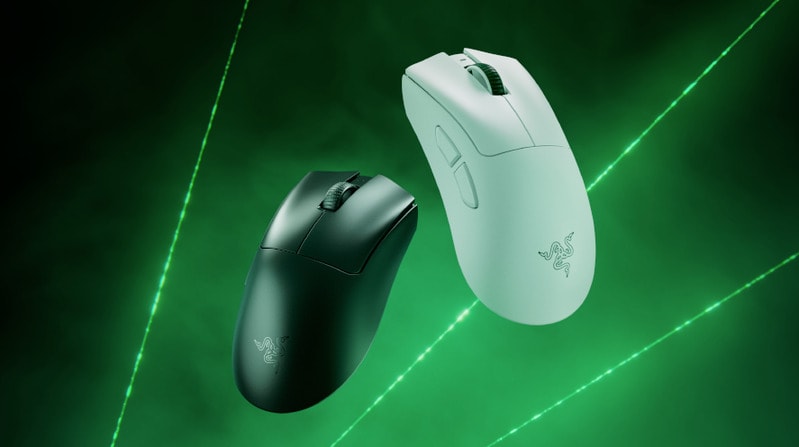
The gaming mouse debuts the brand’s first use of an optical scrolling wheel instead of a mechanical one that’s reported to increase overall precision, durability and consistency. The mouse also features optical switches that have been newly designed with a crisp feedback in mind and are rated for up to 100-million clicks. The mouse is paired with an upgraded wireless transmitter over the previous model to offer a 63% increase in power efficiency and a latency decrease of 37%.
The Razer DeathAdder V4 Pro is priced at $170 and is available now for preorder in two color options that will start shipping July 24, 2025.
Image Credit: Razer
-

 Technology2 weeks ago
Technology2 weeks agoPet fitness and wellness trends for a healthier and happier dog
-

 College Sports2 weeks ago
College Sports2 weeks agoWAC to Rebrand to UAC, Add Five New Members in 2026
-

 Motorsports2 weeks ago
Motorsports2 weeks agoWhy Cosmetics are Making Up for Lost Time in Women’s Sports
-

 College Sports3 weeks ago
College Sports3 weeks agoAlabama Basketball
-

 Professional Sports3 weeks ago
Professional Sports3 weeks agoFrancis Ngannou sends Dana White a message following Jon Jones' shock UFC retirement
-

 College Sports2 weeks ago
College Sports2 weeks agoA new era of Dickinson hockey begins behind the bench – The Dickinson Press
-

 Sports3 weeks ago
Sports3 weeks agoSEC Conference imposing a fine will create the opposite effect.
-

 Health2 weeks ago
Health2 weeks agoFlorida assault survivor shares hope for change with new mental health law
-

 Motorsports2 weeks ago
Motorsports2 weeks agoNASCAR This Week – Patriot Publishing LLC
-

 Youtube2 weeks ago
Youtube2 weeks agoFunniest MLB rain delay moments
































